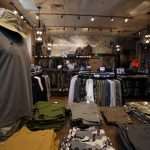The first quarter of 2009 was a very different experience for outdoor industry vendors and retailers versus the first quarter of 2008. Last year at this time, retailers were happy after a long cold winter, and vendors were beginning to feel concerned about a later start to the spring selling season for apparel and footwear. However, both retailers and vendors were seeing growth in sales, margins and profits.
From the 30,000 foot view, the first quarter of 2009 ended March 31 was certainly a difficult time to be in the business of selling outdoor equipment, apparel and footwear. The public companies (and others that report data to the SEC) in the Bicycle, Outdoor and Snow Sports markets saw margins and profitability shrink during the first quarter as retailers worked to reduce inventories by placing smaller pre-season orders and clearing out merchandise at bargain basement prices.
One result of the economic downturn is an almost complete lack of M&A activity (apart from a few of distressed-company acquisitions by Deckers, Merrell and LaCrosse that had little impact to sales or profitability.) This absence of deal flow makes year-on-year comparisons easier. However, sources that are intimately involved with M&A activity in the active lifestyle industry tell BOSS that a new influx of deals may be on the horizon.
First quarter results shown in the charts on page 5 are for those companies that have reported for the period ended closest to the end of March. However, because the report is not a clear picture of the entire industry, BOSS feels the total numbers are less important than the trending information provided in the percentage increase and decrease.
Only 11 of the 24 reporting Bicycle, Outdoor and Snow Sports companies tracked by The SportsOneSource Group reported a sales increase during the quarter. The profitability of this group was negatively impacted even more, with 16 companies reporting either lower profits or larger losses for the quarter.
The top line sales for vendors-especially those focused on footwear and apparel-were clearly hit harder in the first quarter than the reporting retailers. In fact, retailers sales were up slightly for the quarter. However, they clearly paid a steep price for top line results with margins eroding heavily. The margin erosion impacted the bottom line negatively, as most retailers saw profits decline during the first quarter.
While five of the eight reporting retailers showed sales increases during the quarter, the only retailer to show an improvement to the bottom line was Gander Mountain, which is benefiting from its newfound ability to sell outdoor equipment and softgoods through the online channel. Ganders chief publicly-traded competitor, Cabelas, was able to increase its margins, but profitability was negatively impacted by its exposure to the credit card market through Worlds Foremost Bank.
On the vendor side, both sales and profits were negatively impacted by retailers decisions to cut inventories in this new reality of shrinking consumer spending. On aggregate, hardgoods vendors saw sales shrink 7.9% for the quarter while profits were up in the double digits. Softgoods vendors saw sales shrink 6% for the quarter while aggregated profits were cut by slightly more than a third.
Only three of the eight reporting hardgoods vendors reported sales increases for the quarter but hardgoods vendors were considerably more profitable than softgoods vendors.
This profitability was mainly due to Johnson Outdoors impressive five-fold increase in profits this year, in spite of lower sales and declining margins. Even excluding JOUT from the analysis, hardgoods vendors fared better than softgoods.
The second factor impacting profitability in the hardgoods sector was the Snow Sports industry. While the 2008-2009 season was far from a banner year for ski and snowboard manufacturers, many of the public companies were either more profitable or were able to shrink their losses because they had already right-sized their business models following a lackluster 2007/2008. Many in the industry estimate that overall ski and snowboard production worldwide was cut nearly 30% in 2007.
Softgoods vendors had a very difficult quarter. Six of the nine reporting softgoods companies saw their sales decline during the period. Profits for the quarter were most heavily impacted by the heavy losses in footwear market, particularly Crocs. However, every brand that focuses primarily on footwear was less profitable in Q1 of 2009 than they were last year except for Deckers. Apparel Vendors did not fare much better with Columbia and VF Corp. both showing lower profits than last year and Under Armour gaining much of its top-line increase from its new footwear introductions.
The first quarter was clearly still a transition period for many companies that were still coming to terms with the state of the economy. While many companies are still working to shift their expense structure to reflect the current business environment, others have been able to invest into the down-turn, and may be able to pick up some market share going into the remaining three quarters.















